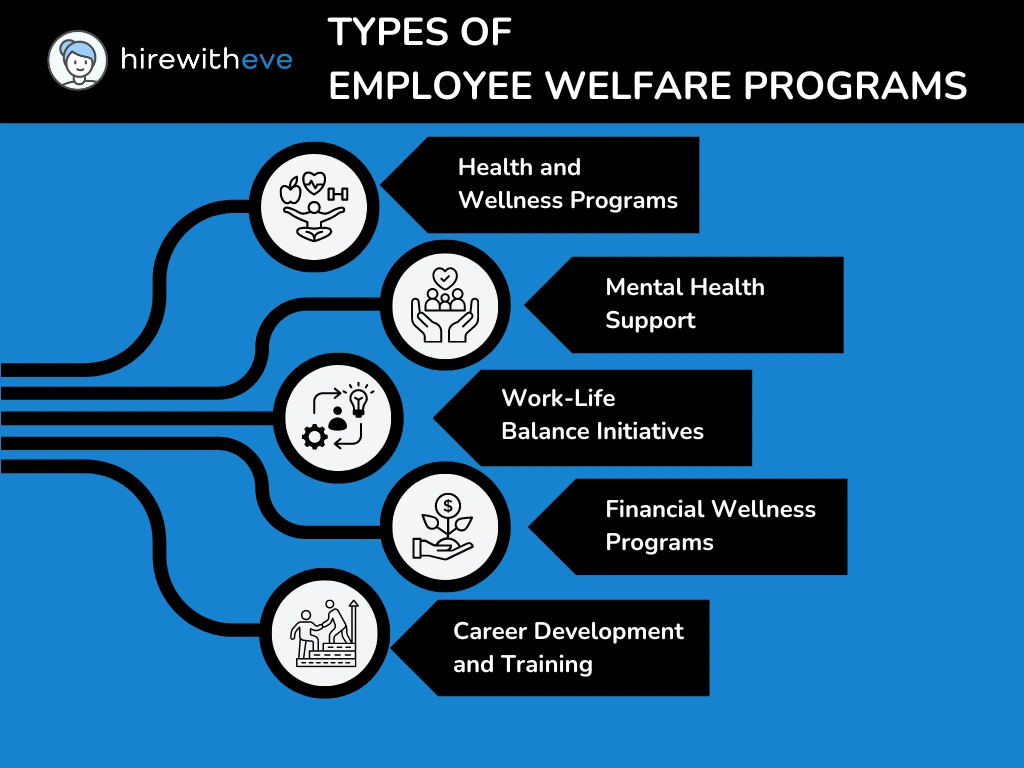What Is Employee Welfare? All You Need to Know

Employee welfare is one of the most critical aspects of a company’s success. It not only influences employee satisfaction and productivity but also strengthens an organization’s reputation as a great place to work.
In today’s highly competitive business environment, talent acquisition specialists and HR managers are constantly seeking ways to attract and retain top talent, and focusing on employee welfare is key to achieving this.
As HR managers, you already know the importance of a healthy, motivated workforce, and Employee Welfare initiatives play a pivotal role in fostering that environment.
This blog will explore everything you need to know about Employee Welfare and why it’s vital for your company’s long-term success.
Understanding Employee Welfare
Employee welfare refers to the efforts made by employers to improve the overall well-being of their employees, both inside and outside the workplace.
This concept encompasses various initiatives, benefits, and services designed to make the working environment more conducive to physical, mental, and emotional well-being.
Employee welfare isn’t limited to just compensation and job security; it also includes providing employees with resources for their personal growth, health, and work-life balance.
Providing adequate employee welfare can reduce employee turnover and absenteeism while boosting morale and productivity. Companies that invest in employee welfare typically see an increase in loyalty and engagement, which directly impacts the bottom line.
Why Employee Welfare is Crucial for Businesses?
Employee Welfare should be a priority for businesses aiming to thrive in today’s corporate landscape. Studies show that businesses with strong employee welfare programs not only have higher retention rates but also see improvements in overall productivity and performance.
Employee welfare initiatives can be as simple as health benefits or as extensive as offering mental health programs, financial wellness plans, and recreational activities.
The Financial Impact
Companies that fail to focus on employee welfare often experience higher turnover rates. Replacing employees is costly, involving not only the recruitment process but also the loss of institutional knowledge and the time taken to train new employees.
Offering comprehensive Employee Welfare programs can lead to significant cost savings in the long run.
Improved Employee Engagement
A workforce that feels valued and supported will engage more with their tasks and responsibilities. Employee Welfare programs foster a supportive environment where employees are encouraged to grow and develop both professionally and personally.
This positive engagement is crucial for business success, as engaged employees are more likely to go above and beyond in their roles.
Types of Employee Welfare Programs
There are several forms of Employee Welfare initiatives that talent acquisition specialists and HR managers can implement, depending on the needs of the workforce.
The following are key types of welfare programs:

Health and Wellness Programs
Employee health is paramount, and offering healthcare benefits, gym memberships, or wellness seminars is an excellent way to support employee welfare. These programs not only reduce the stress associated with health issues but also ensure employees are physically and mentally prepared to tackle their work responsibilities.
Mental Health Support
Mental health awareness is gaining traction, and organizations are now more focused on addressing this issue through employee welfare initiatives. Offering counseling services, mental health days, or meditation workshops can significantly improve employee morale.
Work-Life Balance Initiatives
Flexible working hours, remote work options, and paid time off are all part of employee welfare programs aimed at enhancing work-life balance. HR managers need to understand that overworking employees can lead to burnout, which negatively impacts productivity.
Financial Wellness Programs
Financial well-being is another aspect of employee welfare that organizations are increasingly focusing on. Offering financial education, retirement plans, and even emergency loans can provide employees with a sense of security, ensuring they focus on their work without personal financial stress.
Career Development and Training
Employee Welfare also extends to career growth and development opportunities. Providing access to training programs, mentorship, and education reimbursements helps employees see a clear path for progression, which enhances retention rates.
Case Studies and Surveys on Employee Welfare
Case Study: Google’s Comprehensive Employee Welfare Programs
Google is often cited as a model for Employee Welfare. The company offers various welfare initiatives, from on-site gyms and wellness programs to mental health services and generous parental leave policies.
These programs have contributed to Google being one of the best workplaces, with a highly engaged and motivated workforce.
Survey: The Impact of Employee Welfare on Retention
A survey conducted by SHRM (Society for Human Resource Management) showed that 60% of employees cited employee welfare as a key factor in their decision to stay with a company.
Companies offering comprehensive welfare programs had 40% lower turnover rates than those that didn’t invest in employee welfare.
Conclusion
Incorporating strong Employee Welfare programs is essential for organizations looking to attract and retain top talent. However, managing these welfare programs effectively requires the right tools and platforms. This is where HirewithEve.ai can play a role.
HirewithEve.ai’s platform is designed to streamline the hiring process and also incorporates features that help HR managers manage welfare initiatives efficiently. With data-driven insights and automation, HR managers can create a supportive work environment that benefits both employees and the organization.
By prioritizing employee welfare, and with the help of HirewithEve.ai’s platform, companies can ensure their workforce remains motivated, engaged, and productive.





